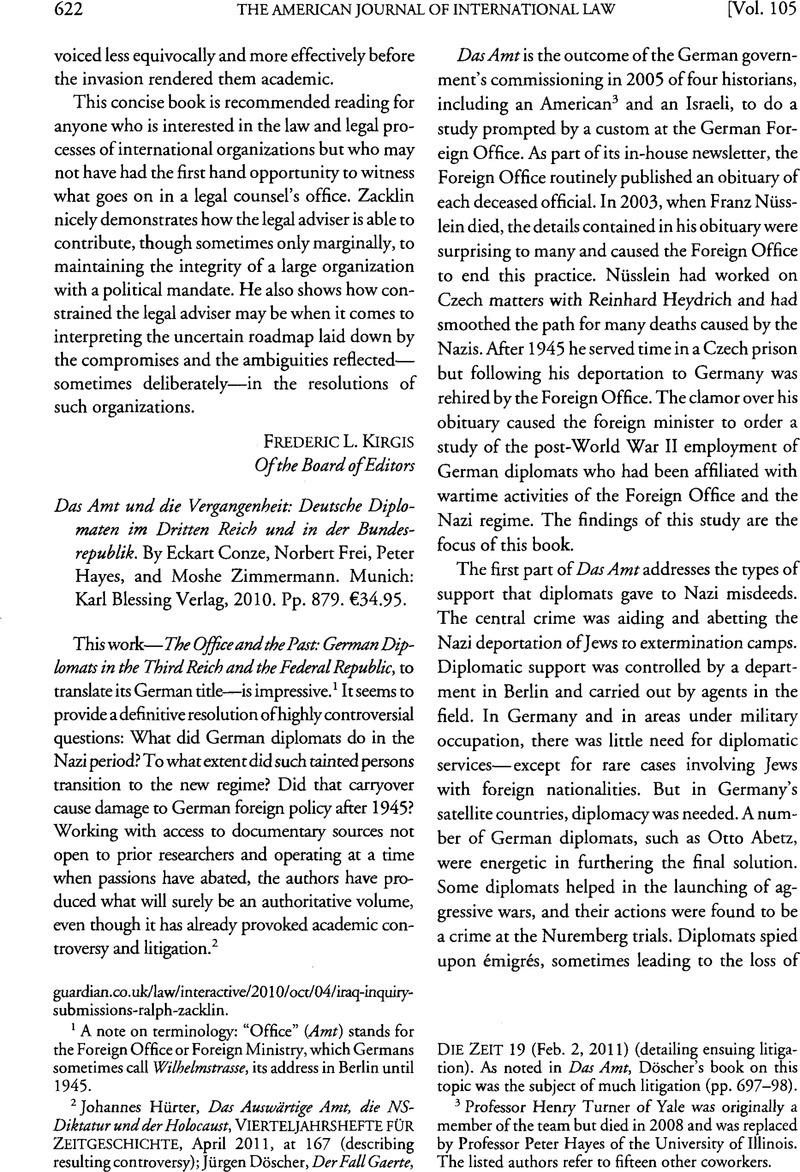Published online by Cambridge University Press: 02 March 2017

1 A note on terminology: “Office” (Amt) stands for the Foreign Office or Foreign Ministry, which Germans sometimes call Wilhelmstrasse, its address in Berlin until 1945.
2 Johannes, Hürter, Das Auswärtige Amt, die NS-Diktatur und der Holocaust , Vierteljahrshefte Für Zeitgeschichte, April 2011, at 167 Google Scholar (describing resulting controversy); Döscher, Jürgen, DerFall Gaert Die Zeit 19 (Feb. 2, 2011)Google Scholar (detailing ensuing litigation). As noted in Das Amt, Doscher’s book on this topic was the subject of much litigation (pp. 697–98).
3 Professor Henry Turner of Yale was originally a member of the team but died in 2008 and was replaced by Professor Peter Hayes of the University of Illinois. The listed authors refer to fifteen other coworkers.
4 In the interest of full disclosure, it should be noted that the reviewer’s father was thus denaturalized in 1937 for a speech at the Fletcher School of Law and Diplomacy deemed disloyal to the Third Reich. The action was extended to the reviewer.
5 XII–XIV Trials of the Major war Criminals Before the Nuernberg Military Tribunals Under Control Council Law NO. 10 (1950–1952).
6 See Muller, Ingo, Hitler’s Justice: The Courts of the Third Reich (Deborah Lucas, Schneider trans., 1991)Google Scholar. In Bavaria, eighty percent of the judges were former party members. Id. at 202–03.
7 See Hébert, Valérie Geneviève, Hitler’s Generals on Trial: The Last War Crimes Tribunal at Nuremberg (2010)Google Scholar.
8 It was twenty-three years before the groundbreaking study, Christopher R. Browning, The Final Solution and the German Foreign Office: A Study of Referat D III of Abteilung Deutschland 1940–1943 (1978), appeared in German.